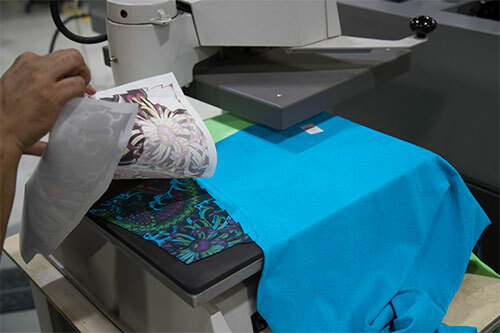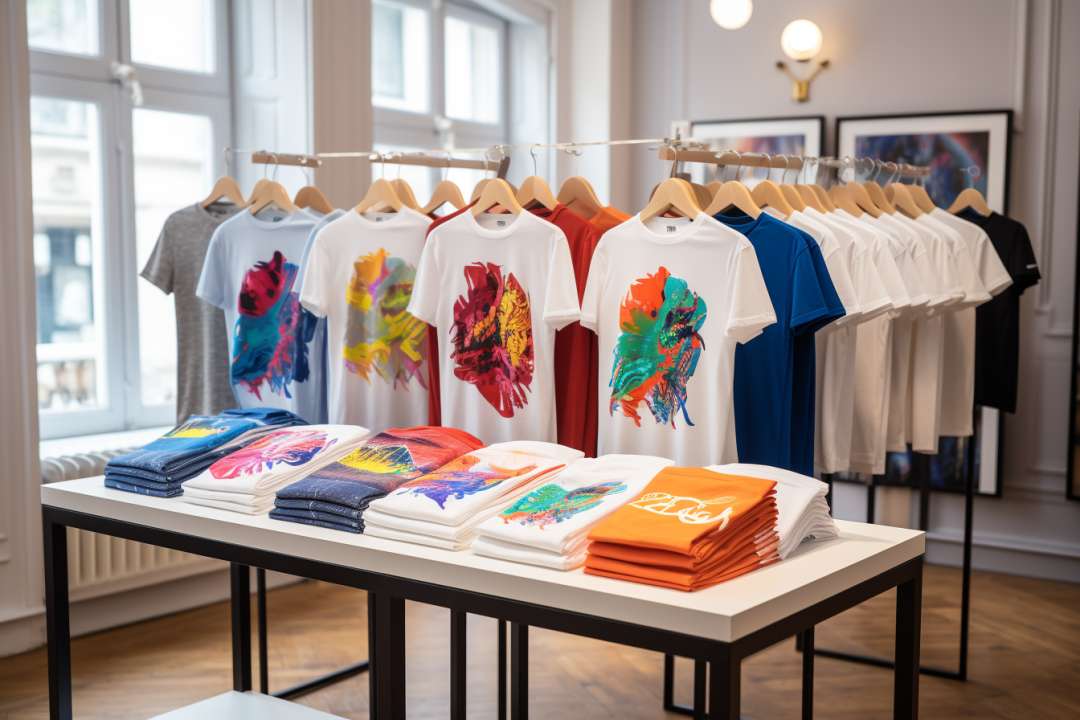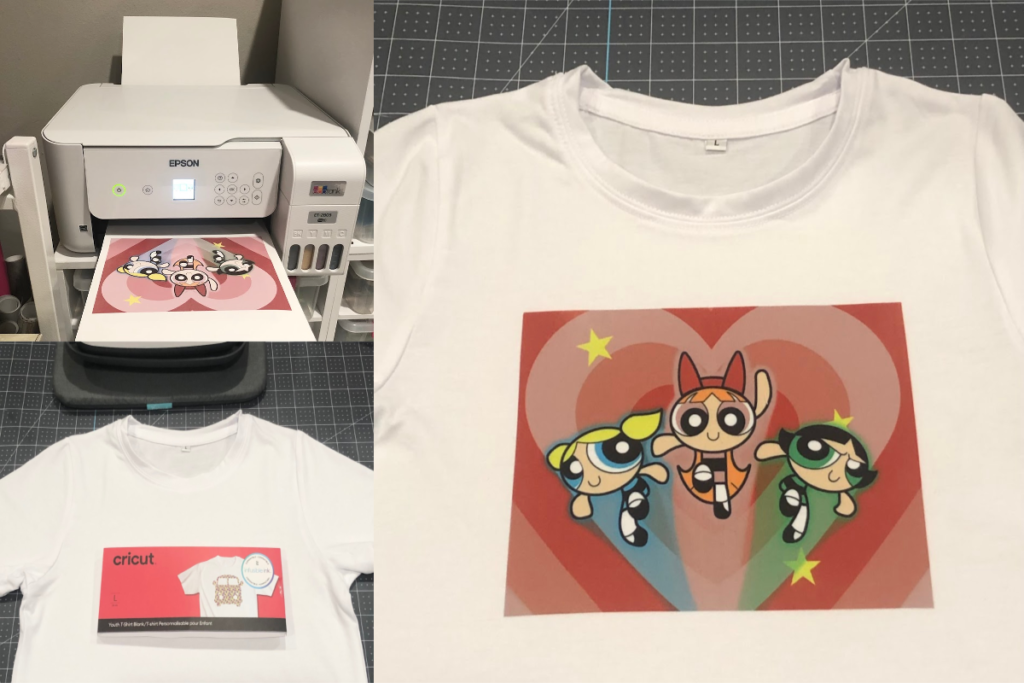Elevate Your Layouts with DTF Printing: A Comprehensive Guide
Wiki Article
The Rise of DTF Printing: Exploring Its Advantages and Applications
The introduction of Straight to Movie (DTF) printing innovation is reinventing the custom-made clothing sector, giving noteworthy advantages and a vast variety of applications. Its distinct capacity to generate top notch, lively prints on numerous materials without the need for pre-treatment considerably maximizes manufacturing procedures and improves functional efficiency. DTF printing's adaptability to both large and small manufacturing runs makes it an appealing choice for developing customized items, such as sporting activities group uniforms and corporate advertising goods. As the cravings for custom products proceeds to increase, comprehending how DTF printing can fulfill these advancing demands is increasingly crucial.
Comprehending DTF Printing Innovation
Comprehending DTF Printing Innovation notes a substantial innovation in the fabric printing industry, specifically for its convenience and effectiveness. Direct-to-Film (DTF) printing is an innovative procedure that involves printing designs onto special transfer films, which are after that moved onto textile utilizing warm and stress. Unlike traditional approaches, DTF printing does not need pre-treatment of the material, making it possible for a much more structured workflow.
When cured, the film is positioned onto the textile, and a warmth press transfers the style by using consistent warm and pressure. This causes vivid, top quality prints that stick perfectly to different material kinds, consisting of cotton, polyester, and blends (heat transfer vinyl printing). The technology's ability to produce vivid and elaborate styles with minimal configuration makes it a game-changer in the textile printing field
Key Benefits of DTF Printing
One of the vital advantages of DTF printing is its remarkable versatility, which allows for premium prints on a vast array of textile types. This capacity prolongs past typical cotton to include polyester, nylon, natural leather, and even combined materials, making it suitable for varied textile applications. This flexibility reduces the demand for multiple printing innovations, simplifying manufacturing processes and minimizing overall expenses.
Another substantial advantage is the remarkable print high quality that DTF innovation delivers. By using vivid, sturdy inks and exact application methods, DTF prints maintain their shade fidelity and sharpness also after countless laundries. This leads to an item that not only looks expert yet also stands the examination of time, supplying constant worth to both end-users and manufacturers.
Additionally, DTF printing supplies a streamlined operations, which can cause raised effectiveness and productivity. Unlike typical approaches such as screen printing, DTF does not require complicated arrangement or substantial drying out times. This simplicity of use makes it an appealing alternative for companies of all dimensions, enabling quicker turnaround times and the capacity to manage tiny to large manufacturing keeps up marginal trouble.
Applications in Custom Apparel
In the realm of customized clothing, DTF printing sticks out as a game-changing innovation that makes it possible for designers and makers to generate bespoke garments with exceptional information and top quality. Direct-to-film (DTF) printing has transformed the custom garments sector by offering flexibility in style, dazzling shade reproduction, and durability. This cutting-edge technique enables elaborate designs to be view website transferred onto a broad range of textiles without endangering the integrity of the product.
One considerable application of DTF printing remains in developing personalized tees, hoodies, and sportswear. The capacity to print complicated graphics with great details and slopes makes it suitable for individualized garments, such as group attires and marketing product. Furthermore, DTF printing is specifically useful for limited-run orders and one-off items, providing a reliable and cost-efficient service compared to typical screen printing techniques.
Additionally, DTF printing has actually opened up brand-new avenues for stylist to explore read this article distinct patterns and structures, enabling the development of cutting-edge, avant-garde collections. This innovation additionally sustains small companies and independent musicians by minimizing the barriers to entrance in the custom-made apparel market. Eventually, DTF printing is improving the landscape of personalized garments, merging imaginative expression with technical advancement.
Flexibility Throughout Different Products
Structure on the improvements in custom-made apparel, DTF printing's versatility throughout various materials better boosts its appeal. Unlike typical printing techniques, DTF (Direct-to-Film) printing can be applied to a comprehensive range of substrates, including cotton, polyester, blends, natural leather, and even hard surface areas like wood and glass.The capability to print on varied materials opens up numerous possibilities for services across different industries. As an example, in the advertising products market, firms can tailor a large variety of things, from carry bags and caps to mugs and phone situations, all with the very same printing innovation. In the apparel industry, DTF printing enables developers to explore complex patterns and vibrant colors on unique fabrics, pushing the boundaries of creativity.
In addition, DTF printing's compatibility with different products likewise translates to cost-efficiency and reduced waste, as producers can use the exact same tools for numerous applications. This convenience not just expands the extent of product offerings yet also enhances functional performance.
Future Prospects of DTF Printing
As the marketplace develops, the future prospects of DTF printing are poised to revolutionize various sectors with continual innovation and technological innovations. The rise in demand for tailored clothing and advertising products is driving the requirement for more reliable, functional, and cost-efficient printing techniques. DTF printing, with its capability to produce high-quality, sturdy prints on a vast variety of products, stands at the forefront of this improvement.
Arising patterns suggest that DTF printing will increasingly integrate with automation and AI innovations, boosting production rate and reducing labor costs. Advanced software program services will further optimize style precision, shade matching, and print consistency, addressing a few of the present restrictions. Furthermore, eco-friendly inks and recyclable transfer movies are expected to get traction, aligning with international sustainability objectives.
As study and growth efforts proceed to expand, the extent of DTF printing will likely broaden, opening brand-new avenues for imaginative and commercial applications. In summary, the future of DTF printing is intense, encouraging substantial advancements and wider industry adoption.
Conclusion

Understanding DTF Printing Innovation notes a significant development in the textile printing sector, especially for its versatility and efficiency. Direct-to-Film (DTF) printing is a cutting-edge procedure that entails printing designs onto unique transfer films, which are after that transferred onto material using warmth and pressure. DTF printing is particularly helpful for limited-run orders and one-off pieces, supplying a efficient and cost-effective service compared to traditional display printing methods.
Unlike conventional printing techniques, DTF (Direct-to-Film) printing can be applied to a considerable range of substratums, including cotton, polyester, blends, leather, and even difficult surfaces like wood and glass.DTF printing technology is revolutionizing the personalized garments industry by supplying reliable, cost-effective, and functional solutions for creating vibrant designs on different materials without pre-treatment.
Report this wiki page